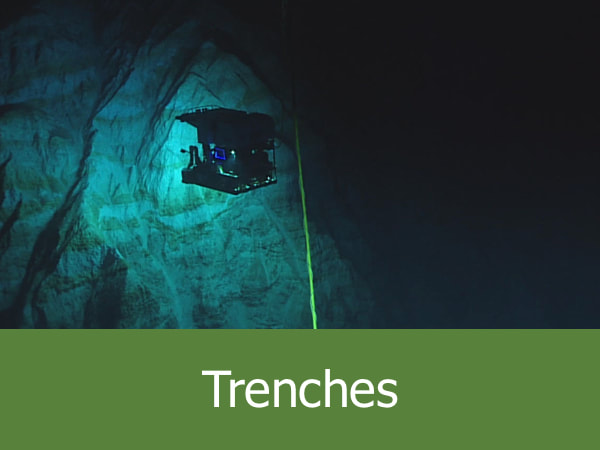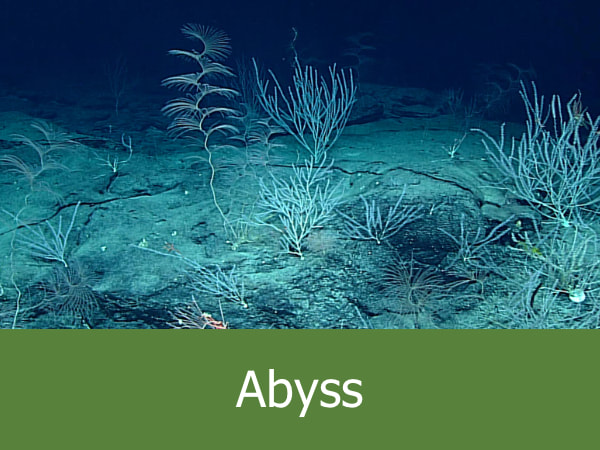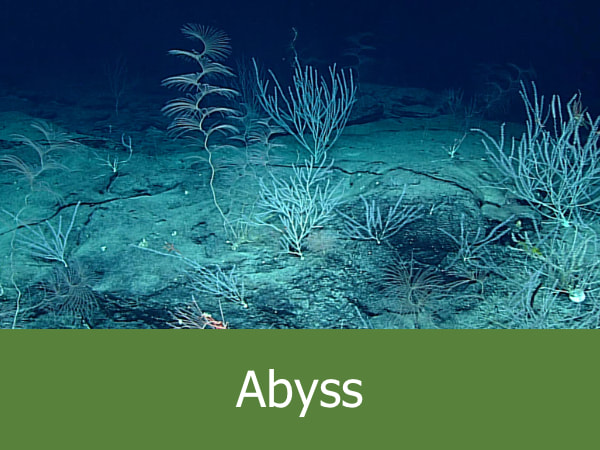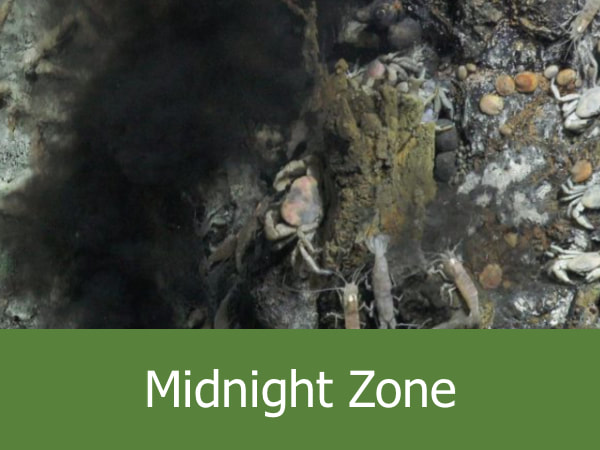Navigate:VIRTUAL EXPLORATIONS > ARCHIVED EXPLORATIONS > AXIAL SEAMOUNT ERUPTION RESPONSE
|
Part 7: First Jason DiveGuest Contributor: Bill Chadwick, Ph.D.
Posted August 18, 2015: Our first ROV Jason dive explored some of the new lava flows on Axial’s North Rift Zone. There are two large, thick new flows located 4.9 to 9.9 miles (8-16 km) north of the summit caldera. Our first Jason dive started near the southern end of those new flows and proceeded northward for about 1.2 miles (2 km). Here’s what we found. Almost everywhere the new lava flows are covered with what we call “eruption mat”. This mat looks like a yellow to orange fuzzy coating on the surface of the new lavas that forms by microbes growing on the lavas as they cool in the weeks and months after the eruption. We have also seen this after previous eruptions at Axial Seamount. The microbial mat varies in thickness and color from place to place, and even covers some of the older lavas around the new flows. This can make it a little confusing to distinguish the new and old lavas in some places, but where there is little or no mat the new lavas are black and glassy. We sampled the new lavas in order to determine their chemical composition to see how the 2015 eruption compares to previous ones, and for high-resolution age dating which will help piece together the duration of the eruption and a sequence of events. As Jason traveled from south to north we were able to follow the eruptive fissure (where the lava had come out of the ground) in many places. Several of the new lava flows were thin and fluid, and even where the lava flows are thicker, they have drained out collapse features, indicating that the flow lobes had a molten interior. We found many new hydrothermal vents on the new flows, areas where warm shimmering water (up to 20°C or 68°F) was coming out of the seafloor, undoubtedly heated up by the eruption and the slow cooling of the lavas (we know there were few vents on the north rift zone before the eruption). We saw a lot of microbial flocculant floating in the water, suggesting that “snowblower vents” exist on the new flows, but we just did not run across them. One exciting surprise was that we found several vents that had already been colonized by vent animals — tubeworms (Ridgeia piscesae) and Pandorae worms (Paralvinella pandorae). The tubeworms are small (less than 1.9 inches or 5 cm long), having colonized and grown only in the last 4 months, but interestingly the Pandorae worms are unusually large, perhaps because of the lack of competition in these brand-new vents right after an eruption (according to our colleague Verena Tunnicliffe at University of Victoria). |
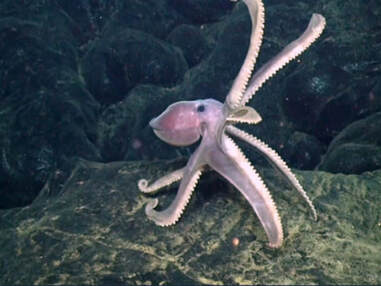 A deep-sea octopus (Graneldone sp.) strikes a defensive pose.
A deep-sea octopus (Graneldone sp.) strikes a defensive pose.
We also encountered two deep-sea octopi (Graneldone sp.), one of which appeared to be trying to make itself as large and scary as possible to intimidate Jason into leaving it alone.
Our first dive with Jason was very successful, but unfortunately it had to be cut short due to rising winds and seas. The forecast is for the weather to get worse before it gets better, so we will likely not be able to dive again for a few days and we’ll be conducting other operations in the meantime.
Photos and video courtesy of the 2015 Axial Team.
Our first dive with Jason was very successful, but unfortunately it had to be cut short due to rising winds and seas. The forecast is for the weather to get worse before it gets better, so we will likely not be able to dive again for a few days and we’ll be conducting other operations in the meantime.
Photos and video courtesy of the 2015 Axial Team.



